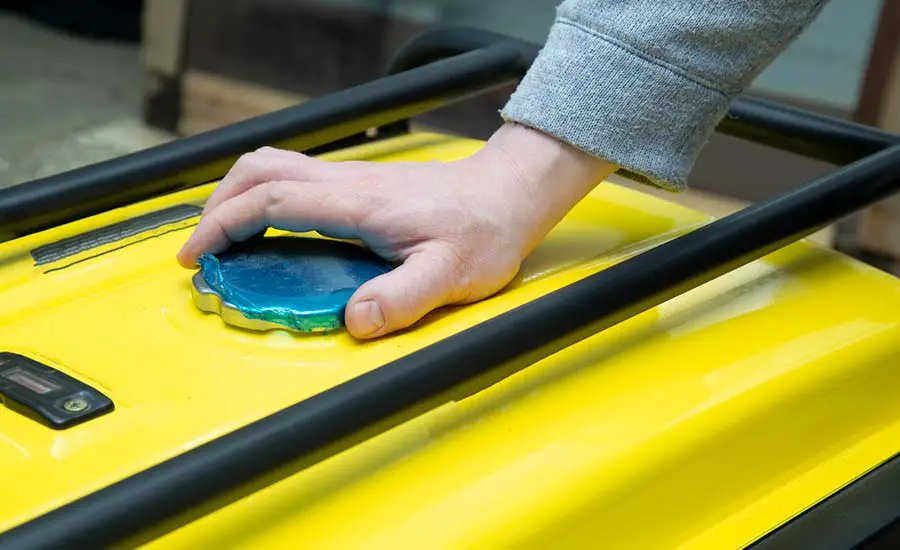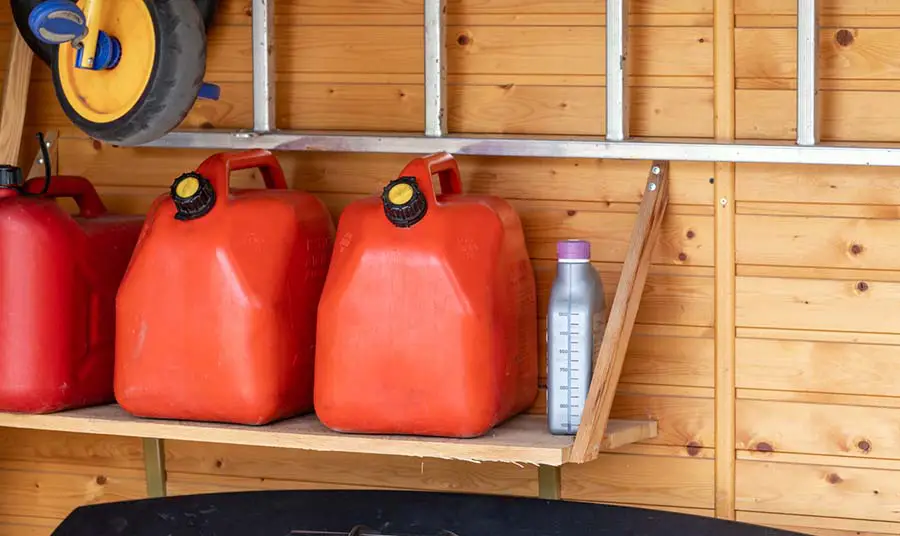
We rely on generators to keep the lights and other essential appliances on when the power goes out. These events, however, do not happen often. Most of the time, we have a generator for that ‘just in case’ moment, but most of the time, we keep fuel stored in our generators until that event occurs. The question then is, for how long can you keep gas in your generator until it deteriorates?
Untreated gasoline can last between one and six months in a generator’s fuel tank, depending on many factors. Gas stored in a gas can typically last six months or more, but generator gas tanks are not as air-tight, so the gasoline oxidizes and degrades quicker.
You’re not supposed to leave gasoline in a generator for long periods. We can use a couple of examples to demonstrate how long gasoline will last in different scenarios. Furthermore, there are steps you can follow that will help you extend the shelf life of the gas in the fuel tank of your generator. In the article below, we will discuss all of these essential aspects.
How Long Gas Stays Good In a Generator
There is no fixed period regarding how you can store in a generator’s fuel tank before it goes bad. That said, there are a few examples that we can use that will help us determine approximately how long gas can be left in a generator before it will be unusable. Below, we will explore some of these examples.
How Lone Gasoline Stored In a Gas Can Lasts

Fuel oxidizes and degrades over time, which means that the fuel gets exposed to oxygen and its effectiveness decreases. Furthermore, the volatile components of the fuel evaporate as time goes on. Despite all these forces that act upon the gasoline and contribute to its deterioration, gasoline can still last up to six months – provided it is properly stored!
Suppose you keep your gasoline stored in a tightly sealed container constructed from high-quality plastic or metal. In that case, you can increase the life span of the gas to three to six months, or even longer.
How Long Gasoline Blended With Ethanol Lasts
The US Energy Information Administration stated that most gasoline sold in the United States contains a mixture of 10% and 90% petroleum-based gas. They named this fuel mixture E10, which indicates that it contains 10% ethanol. Gasoline that has a mixture with ethanol can last up to three months – E10 lasting the longest.
The reason it lasts this long is that ethanol has a high speed at which it oxidizes. Since ethanol has an affinity towards water, it absorbs water from humidity in a sealed container. Usually, condensation contributes to humidity and water found in a sealed container, which leads to the fuel in your container suffering from moisture contamination.
Generally speaking, the higher the concentration of ethanol in your fuel, the quicker it will deteriorate and the shorter the shelf life of the fuel becomes. Logically, certain fuel types that contain higher ethanol concentrations, such as E15 (which contains 15% ethanol) or E20 (which contains 20% ethanol), will last even shorter than E10 – which is significantly less than three months.
How Long Pure Gasoline Lasts
Gasoline that does not contain any trace of ethanol will also oxidize eventually and deteriorate in a high-quality tank or container, but the process takes much longer. Because no ethanol has an affinity towards water, this type of gasoline can last you up to 6 months.
Due to its adverseness to water, ethanol does not absorb water, which means that you avoid any issues that result from fuel separation or moisture contamination.
So, How Long Does Gasoline Last In a Generator?
From the research gathered above, we can determine that most fuels can reach a shelf life of anything between three to six months or more. These are, however, for when you store fuel in a container. Granted that containers are not the generator’s fuel tank, we can conclude that a generator will not last as long in a fuel tank compared to how long it lasts in a sealed container.
This is due to more air in a generator’s fuel tank, whereas containers keep air out to prevent any substance in it from oxidizing. Accordingly, we can conclude that gasoline will have a shorter shelf life than three to six months.
Some maintain that the useful life of fuel left in a generator only stretches up to a month, whereas others believe that fuel left in any container only lasts between three and five months.
Accordingly, we have one month on the lower end, and on the upper hand, we have six months. Ultimately, it depends on the fuel you use that will determine how long the fuel in your generator can last before it ‘expires.’
How To Increase the Life Expectancy of Gas Left In a Generator

We know that gasoline left within your generator can probably last you between one and six months if you are lucky. Given that the six-month estimate is based on a sealed container, your fuel probably will not even last you close to six months under normal conditions. With that said, how can you improve the lifespan of fuel left in your tank? Let us find out.
1. Fill the Gas Tank Up to the Maximum Fill Line
When you fill your generator’s tank with gasoline, try and make sure that you fill it up to the fill line. Do not fill it up so much that there is no space left for air at all; that would be overfilling it. You should consult the user manual for your fuel tank’s gallon rating and use that value as your target volume.
Accordingly, there should still be a bit of room left for vapors to expand and contract in your fuel tank but filled enough to leave no extra room. Thus, you do not want to overfill or underfill your tank.
You don’t want to over or underfill because if it gets cold, the moisture in the air will be subject to condensation inside of the fuel tank. This means that water will form, and it will run down into the fuel of your tank. This will negatively affect the combustion of the fuel and can lead to fuel ‘gumming’ up.
2. Do Not Use Ethanol Gasoline
As mentioned previously, ethanol has an affinity to water and will absorb it more while also oxidizing faster than ethanol-free fuel.
Some have reported that working with generator engines that function with ethanol fuel had worse fuel lines than those that operate with pure gasoline. Additionally, the carburetor jets gummed up due to the increased moisture in the fuel.
That said, it’s important to note that ethanol-free gasoline is treated with the appropriate fuel stabilizer. Fuel stabilizer is added to gasoline to ensure that it does not react adversely to the oxygen and, as a result, oxidizes.
3. Shut Off the Fuel Valve of Your Generator
Every time your generator comes to a stop, it is essential to shut the generator’s fuel valve off. This is a step further from merely turning off the kill switch to your generator.
It is crucial to let shut off the fuel valve of your generator and then let your generator run until it naturally comes to a stop. Your generator will run for a couple of minutes after you’ve shut off the fuel valves, and the generator will consume all the fuel in the fuel lines and the fuel found in your carburetor.
Conclusion
In conclusion, do not expect to buy your generator, fill it up with gasoline, and only use it a decade later. Yes, we do not want to resort to using gasoline daily, but the gas in your generator’s fuel tank will go bad eventually.
Worst case scenario, you will have to throw the gasoline away (or use it all) within a month. In the best-case scenario, you will have half a year to use your gasoline. To increase your chances of having longer shelf life for your gasoline, follow the tips given above.
